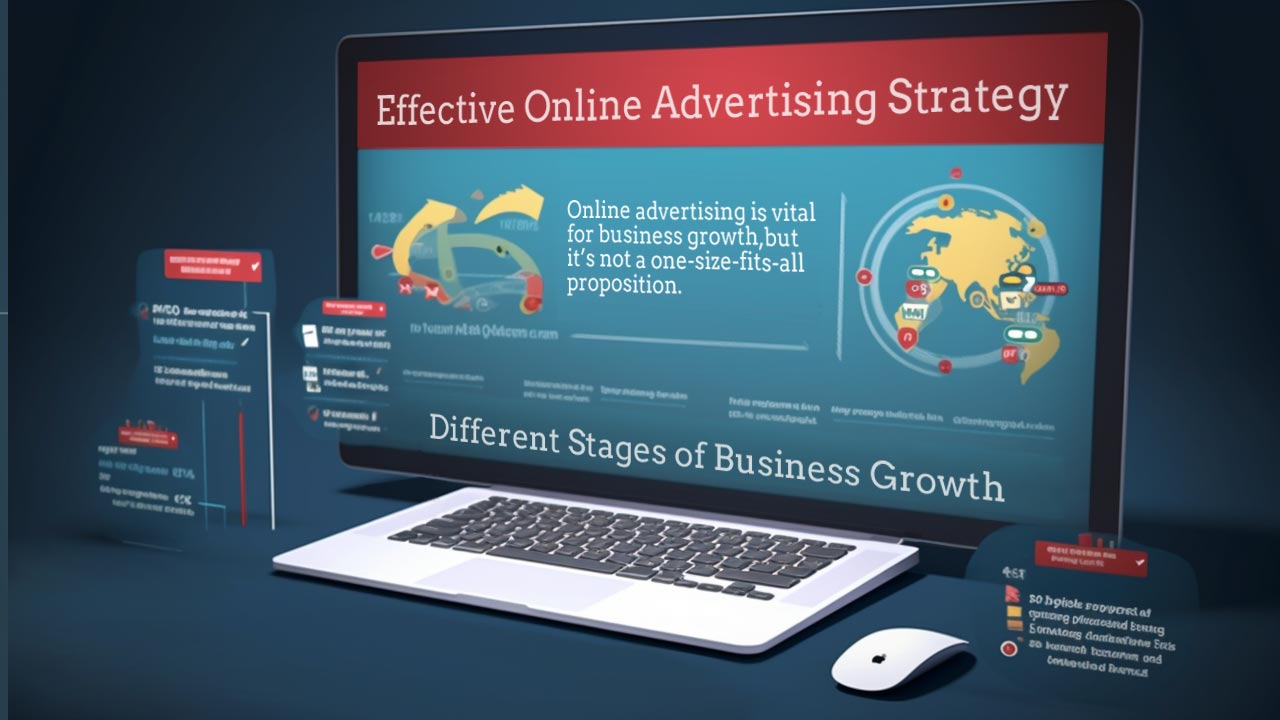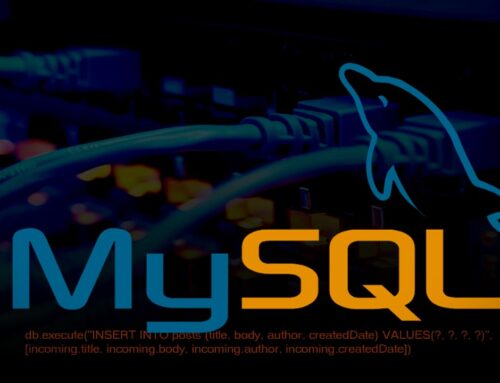In the digital age, online advertising is vital for business growth, but it’s not a one-size-fits-all proposition. As your business evolves, so should your advertising strategies. This comprehensive guide focuses on how you can adapt your online advertising strategies as your business progresses through different growth stages. Inspired by expert insights from Shopify, we’ll delve into the nuances of advertising for businesses at various stages, from startups to well-established enterprises. We’ll explore the best practices, channels, and tactics to use at each stage, backed by statistics, research, and expert opinions. You’ll learn not only the what and how, but also the why, so you can make informed decisions about your advertising strategy and ensure your business continues to thrive.
Whether you’re at the beginning of your entrepreneurial journey or leading a mature business, there’s something for you here. Online advertising is a dynamic and complex field, but this guide will demystify it, providing clear, actionable strategies tailored to your business’s stage of growth.
Effective Online Advertising Strategies for Different Stages of Business Growth
Table of Contents
- Online Advertising for Startups
- Online Advertising for Growth Stage Businesses
- Online Advertising for Mature Businesses
- Frequently Asked Questions
- Final Thoughts
- Sources
Online Advertising for Startups
Online advertising is crucial for startups, often working with limited budgets and resources. They need to maximize every penny spent on advertising, so cost-effective and impactful strategies are essential. Considering the unique dynamics of startups, we will delve into targeted social media advertising, Search Engine Optimization (SEO), and content marketing. These methods are ideal for startups to tap into a wide audience base without breaking the bank.
Targeted Social Media Advertising
In the world of online advertising, targeted social media advertising holds a special place, especially for startups. With billions of active users across various platforms, social media provides a cost-effective way to reach a broad yet highly targeted audience. This section provides a deep dive into the different facets of targeted social media advertising and why it’s such a powerful tool for startups.
Understanding Your Audience
The first step in targeted social media advertising is understanding your audience. This involves defining your target demographic, including their age, gender, location, interests, and behaviors. You can obtain this information through market research, customer surveys, and analytics tools provided by social media platforms.
Choosing the Right Platform
Next, it’s crucial to choose the right platform based on your target audience. Facebook, with its wide user base, is ideal for reaching a broad demographic. Instagram is popular among younger users and is perfect for visually appealing products or services. LinkedIn is most suited for B2B marketing, targeting professionals and businesses, while Twitter works well for real-time engagement and news dissemination.
Tailoring Your Message
Once you know your audience and have chosen your platform, tailor your advertising message to resonate with your target demographic. Each social media platform has its content style, so it’s important to adapt your message to fit. This could mean creating visually appealing posts for Instagram, informative articles for LinkedIn, or engaging tweets for Twitter.
Tracking and Optimizing
After your ads are live, it’s crucial to track their performance using the analytics tools provided by the social media platform. Monitor key metrics like click-through rates (CTR), engagement rates, and conversion rates to assess the effectiveness of your ads. Use this information to refine your targeting, tweak your messaging, or adjust your budget to optimize your campaign’s performance.
Remember, the key to effective targeted social media advertising is continual testing and optimization. Monitor your campaigns closely, be ready to make changes based on performance data, and don’t be afraid to experiment with different approaches to find what works best for your startup.
In conclusion, targeted social media advertising can be a powerful tool for startups, providing a cost-effective way to reach a broad, yet targeted, audience. By understanding your audience, choosing the right platform, tailoring your message, and continually monitoring and optimizing your campaigns, you can leverage social media advertising to grow your startup effectively.
Search Engine Optimization (SEO)
Search Engine Optimization, or SEO, is a strategic approach to improve a website’s visibility in organic (non-paid) search engine results, making it an ideal strategy for startups. Effective SEO can drive high-quality, targeted traffic to your website, resulting in increased brand visibility and conversions.
Understanding SEO
SEO involves making specific changes to your website design and content that make your site more attractive to search engines. The goal is to have your website displayed at the top of search engine results pages (SERPs) when users perform searches related to your product or service.
Keyword Research
The foundation of SEO is keyword research. Identifying the right keywords – words and phrases that people type into search engines – helps you understand what your potential customers are looking for. Tools like Google Keyword Planner or SEMrush can help identify high-volume, relevant keywords that are less competitive, thus easier to rank for.
On-Page SEO
Once you’ve identified your keywords, the next step is on-page SEO. This involves optimizing individual pages of your website to rank higher in search engines. Elements to focus on include title tags, meta descriptions, header tags, and content. Ensure that your keywords are incorporated naturally within these elements.
Off-Page SEO
Off-page SEO refers to actions taken outside of your own website to improve its search engine rankings, with link building being a key strategy. This can involve getting high-quality, relevant websites to link back to your site (backlinks), which signals to search engines that your site is a trusted and authoritative source.
Technical SEO
Technical SEO refers to optimizing your website’s infrastructure for crawling and indexing by search engines. This includes improving site speed, mobile-friendliness, site architecture, and implementing structured data markup. A well-optimized website is more likely to be favorably indexed by search engines, improving its visibility.
Analytics and Reporting
Lastly, it’s crucial to monitor your SEO efforts through analytics and reporting. Tools like Google Analytics and Google Search Console can provide valuable insights into your website’s performance and your audience’s behavior, allowing you to refine your strategy over time.
In conclusion, SEO is a cost-effective strategy for startups looking to increase their online visibility. By focusing on keyword research, on-page SEO, off-page SEO, technical SEO, and monitoring your performance through analytics, you can build a strong online presence that drives high-quality traffic to your site.
Content Marketing
Content marketing is a strategic approach focused on creating and distributing valuable, relevant, and consistent content to attract and retain a clearly defined audience. This approach can significantly benefit startups, not only in terms of driving website traffic and generating leads but also in establishing a brand’s authority and credibility.
Understanding Content Marketing
The primary objective of content marketing is to engage and nurture your audience rather than explicitly promoting your brand. By offering your audience high-quality content, you can build strong relationships, foster trust, and ultimately encourage them to convert into customers.
Developing a Content Strategy
Creating a content strategy involves identifying your target audience, understanding what kind of content they value, and determining how you’ll create and distribute that content. You’ll want to consider the buyer’s journey and create content for each stage: awareness, consideration, and decision.
Types of Content
Content can come in many forms, and the best type of content for your brand will depend on your industry, target audience, and specific goals. Blog posts, e-books, white papers, infographics, webinars, podcasts, and video content are just a few examples. For instance, blog posts can help improve SEO and drive organic traffic, while e-books or white papers can be used as lead magnets to collect email addresses.
Content Creation
Once you’ve planned your content strategy, it’s time to start creating. Remember, the content you produce should be high-quality, relevant, and valuable to your audience. Consider their pain points and how your content can address them. Incorporate keywords naturally to aid in SEO but avoid keyword stuffing, which can be penalized by search engines.
Content Distribution
Creating content is only half the battle; you also need to distribute it effectively. This can involve sharing it on social media, sending it via email newsletters, featuring it on your website, or even guest posting on other reputable websites.
Analytics and Optimization
After distributing your content, it’s essential to measure its effectiveness. This can involve tracking metrics like page views, time on page, social shares, and conversion rates. Use this data to continually refine and optimize your content strategy.
In conclusion, content marketing is a powerful tool for startups. By developing a solid content strategy, creating high-quality and relevant content, effectively distributing this content, and continually monitoring and optimizing your strategy, you can engage and retain your audience, build brand authority, and drive conversions.
Online Advertising for Growth Stage Businesses
As a business transitions from startup to growth stage, its advertising needs change. Increased budgets, broader customer base, and a more established market presence mean that the business can now utilize more comprehensive and complex online advertising strategies. In this section, we’ll delve into data analytics for customer targeting, expansion to new advertising platforms, and the implementation of more sophisticated strategies like retargeting and Pay-Per-Click (PPC) advertising.
Data Analytics for Customer Targeting
Data analytics has become a cornerstone of effective online advertising, especially for growth-stage businesses that have accumulated a significant amount of customer data. By leveraging this data, businesses can gain deeper insights into their customers’ behaviors, preferences, and needs, enabling them to target their advertising efforts more effectively.
Understanding Your Customer Data
Customer data can come from various sources, including website analytics, social media interactions, customer surveys, and transaction data. This data can provide insights into who your customers are (demographics), what they are interested in (behaviors), and what they think about your products or services (attitudes).
Segmenting Your Audience
Once you understand your customer data, the next step is audience segmentation. This involves grouping your customers based on shared characteristics such as demographics, behaviors, or needs. Each segment represents a distinct group of customers that can be targeted with tailored advertising messages.
Personalized Advertising
With your audience segments in place, you can now create personalized advertising campaigns. This involves crafting tailored messages that resonate with each segment, thus improving the relevance and effectiveness of your ads. Personalized ads can lead to higher click-through rates (CTR) and conversion rates, resulting in a better return on investment (ROI) for your advertising spend.
Predictive Analytics
Growth-stage businesses can also utilize predictive analytics, a technique that uses historical data, statistical algorithms, and machine learning to predict future customer behaviors. This can help businesses anticipate customer needs, optimize their advertising efforts, and enhance customer engagement.
Implementing A/B Testing
A/B testing, or split testing, involves testing two different versions of an ad to see which one performs better. This can help businesses optimize their advertising efforts by identifying the most effective messaging, design elements, and targeting strategies.
In conclusion, data analytics can significantly enhance a growth-stage business’s online advertising strategy. By understanding your customer data, segmenting your audience, personalizing your advertising, utilizing predictive analytics, and implementing A/B testing, you can ensure your advertising efforts are targeted, relevant, and effective.
Expansion to New Advertising Platforms
As a growth-stage business, expanding your online advertising to new platforms can be a valuable strategy to broaden your reach, tap into new customer segments, and drive more conversions. Below, we will explore how and why to consider this expansion.
Identifying Suitable Platforms
The first step in expanding to new advertising platforms is identifying which platforms are suitable for your business. You need to consider where your target audience spends their time online. If your products appeal to a younger demographic, platforms like Snapchat or TikTok may be worthwhile. For visually-oriented products, Pinterest might be a good option. If you’re in the B2B space, consider platforms like LinkedIn or even industry-specific online communities.
Diversifying Your Advertising Mix
By diversifying your advertising platforms, you can reach a wider audience and mitigate the risk of over-reliance on a single platform. Each platform has its unique user demographics and advertising features. Thus, diversifying your advertising mix allows you to leverage these unique characteristics and engage different segments of your target audience.
Mastering Platform-Specific Strategies
Each advertising platform has its unique features and requires a different strategic approach. For instance, advertising on Google Display Network involves crafting compelling banner ads and selecting the right websites to display them. In contrast, advertising on Snapchat might involve creating engaging short videos tailored to a younger audience. It’s important to understand the nuances of each platform and tailor your strategy accordingly.
Analyzing and Optimizing Performance
Once you’ve expanded to new platforms, it’s crucial to monitor your campaigns’ performance closely. Analyze key metrics like impressions, clicks, conversions, and ROI to understand how well your ads are performing on each platform. Use this data to refine your targeting, tweak your ad copy and design, and optimize your advertising budget.
In conclusion, expanding to new advertising platforms can help growth-stage businesses reach a wider audience, diversify their advertising mix, and optimize their overall online advertising strategy. However, this expansion should be approached strategically, ensuring that each platform aligns with your target audience and business objectives, and that performance is regularly monitored and optimized.
Retargeting Strategies
Retargeting, also known as remarketing, is a powerful online advertising strategy that involves serving ads to individuals who have previously interacted with your brand. This can be a particularly effective strategy for growth-stage businesses, as it allows you to re-engage potential customers who have already shown interest in your products or services.
Understanding Retargeting
In the context of online advertising, retargeting works by using cookies to follow your audience around the web. When a user visits your website or interacts with your brand, a small piece of code (a cookie) gets stored on their device. This cookie allows retargeting platforms to serve ads to this user as they browse other sites, effectively “following” them around the internet.
Implementing Retargeting
Retargeting can be implemented on various platforms, including Google AdWords, Facebook, and LinkedIn, among others. Each platform offers different features, but they all allow you to segment your retargeting audience based on their behaviors. For instance, you can retarget users who visited a specific product page, added an item to their shopping cart but didn’t check out, or interacted with a specific post on your social media.
Benefits of Retargeting
The primary benefit of retargeting is that it allows you to stay top of mind with your potential customers. Users who have already interacted with your brand are more likely to be interested in your products or services, making them high-value targets for your ads. By serving these users tailored ads based on their past interactions, you can nudge them towards conversion.
Moreover, retargeting can improve brand recognition, increase engagement, and provide a better return on ad spend (ROAS) than other forms of online advertising.
Crafting Effective Retargeting Ads
To get the most out of your retargeting efforts, it’s important to craft effective ads. This can involve using personalized messaging based on the user’s past interactions, offering special promotions or discounts to incentivize conversion, and using compelling visuals that grab the user’s attention.
Continual Optimization
Like all online advertising strategies, retargeting requires continual optimization. Regularly analyze your retargeting campaigns’ performance, testing different ad creatives, messaging, and offers, and adjusting your strategy based on what works best.
In conclusion, retargeting can be a powerful strategy for growth-stage businesses. By keeping your brand top of mind, personalizing your ads, and continually optimizing your strategy, you can re-engage potential customers, increase conversions, and improve your ROAS.
Pay-Per-Click (PPC) Advertising
Pay-Per-Click (PPC) advertising is a type of online advertising model where advertisers pay each time a user clicks on one of their online ads. PPC can be an efficient way to drive traffic to your site, especially for growth-stage businesses, as it allows them to reach a wider audience, target specific keywords, and measure the effectiveness of their campaigns.
Understanding PPC
PPC ads can appear on search engines, social media platforms, and other websites. One of the most popular PPC platforms is Google Ads, which allows ads to appear in search results for specific keywords. Other PPC platforms include Bing Ads, Facebook Ads, and LinkedIn Ads.
Keyword Research
A successful PPC campaign begins with thorough keyword research. Keywords are the terms that users type into search engines when looking for a product or service. By bidding on relevant keywords, your ads can appear when these terms are searched, thereby reaching users with high purchase intent. Tools like Google Keyword Planner can help identify high-volume, low-competition keywords that can drive traffic to your site.
Crafting Effective Ads
The effectiveness of a PPC ad largely depends on its quality and relevance. Ad copy should be compelling, include a clear call to action, and directly relate to the keyword it’s targeting. Furthermore, your ad’s landing page should be relevant to the ad copy and offer a seamless user experience to encourage conversions.
Setting and Managing Your Budget
With PPC, you have full control over your advertising budget. You can set a maximum daily budget and determine how much you’re willing to pay for each click. However, managing your PPC budget effectively requires ongoing optimization, as you’ll need to monitor your campaigns’ performance and adjust your bids to maximize your ROI.
Analyzing and Optimizing Your Campaigns
Monitoring and analyzing your PPC campaigns is critical for success. Key metrics to consider include click-through rate (CTR), cost-per-click (CPC), and conversion rate. Based on these metrics, you can continually refine your keywords, ad copy, and bidding strategy to improve your campaigns’ performance.
In conclusion, PPC advertising can be a powerful tool for growth-stage businesses. By conducting thorough keyword research, crafting effective ads, managing your budget effectively, and continually optimizing your campaigns, you can drive traffic to your site, reach users with high purchase intent, and boost your online advertising ROI.
Online Advertising for Mature Businesses
When a business reaches the maturity stage, it already has a strong customer base, steady revenue streams, and established brand recognition. At this point, the advertising strategies may shift from aggressive customer acquisition to maintaining market share, nurturing customer relationships, and exploring innovative ways to stay ahead of the competition. This section will explore advanced online advertising strategies that are relevant for mature businesses, including programmatic advertising, native advertising, influencer marketing, and exploring cutting-edge technologies.
Programmatic Advertising
Programmatic advertising is the automated buying and selling of online ad inventory. It represents the convergence of data science and advertising, where Artificial Intelligence (AI) and real-time bidding (RTB) are used to deliver personalized and efficient ad campaigns. For mature businesses, programmatic advertising offers a sophisticated and highly scalable approach to online advertising.
Understanding Programmatic Advertising
In traditional online advertising, businesses manually negotiate contracts, set prices, and choose platforms for their ads. With programmatic advertising, these processes are automated. The advertiser defines the budget, the target audience, and the campaign goals, and the technology takes care of the rest.
Benefits of Programmatic Advertising
Programmatic advertising offers numerous benefits for mature businesses. It provides access to a broad range of ad inventory across multiple platforms and formats, including display, video, mobile, and social media. It allows for real-time optimization of campaigns based on performance data. Furthermore, it offers precise targeting capabilities, enabling businesses to reach their desired audience segments efficiently.
Real-Time Bidding (RTB)
One of the main components of programmatic advertising is real-time bidding (RTB), a type of programmatic buying where ad inventory is bought and sold on a per-impression basis, in real-time. When a user visits a website, their information is sent to an ad exchange, which then auctions it off to the advertiser willing to pay the highest price. The entire process happens in milliseconds, ensuring the right ads are served to the right users.
Privacy Considerations
Despite its numerous benefits, programmatic advertising also presents certain challenges, particularly concerning user privacy. With changing regulations like the General Data Protection Regulation (GDPR) in Europe and the California Consumer Privacy Act (CCPA) in the US, businesses must ensure their programmatic advertising practices are compliant.
In conclusion, programmatic advertising provides a sophisticated and scalable approach to online advertising for mature businesses. It offers precise targeting, real-time optimization, and broad access to ad inventory. However, businesses must also be mindful of privacy regulations and ensure their programmatic practices are compliant.
Native Advertising
Native advertising is a type of online advertising that matches the form, feel, and function of the platform upon which it appears. Unlike traditional display ads, native ads do not overtly look like ads, instead, they blend seamlessly with the platform’s regular content. For mature businesses, native advertising can provide a more engaging and less intrusive way to connect with audiences.
Understanding Native Advertising
Native ads can take many forms, depending on the platform they’re placed on. For example, on a news website, a native ad might appear as a sponsored article that resembles the site’s regular news content. On social media, native ads might appear as sponsored posts that blend into the user’s feed.
Benefits of Native Advertising
Native advertising offers several benefits for mature businesses. Firstly, because native ads blend with the platform’s content, they’re less likely to be ignored by users. Research from the Native Advertising Institute suggests that native ads can lead to higher view rates than traditional display ads.
Secondly, native advertising allows for a more organic way to share your brand’s story. Instead of overt selling, you can provide valuable content that resonates with your audience and naturally leads them to your brand.
Lastly, native advertising can help improve brand perception. Because the ads are less intrusive and provide value to the user, they can lead to a more positive brand association.
Implementing Native Advertising
Successful native advertising requires understanding your audience and the platform. The content should align with the platform’s tone and style, and it should provide value to your target audience. Moreover, while the content should blend with the platform, it should also be clearly labeled as sponsored content to maintain transparency and trust with your audience.
Measuring Success
Like any online advertising strategy, the success of native advertising should be measured and optimized over time. Key performance indicators (KPIs) can include engagement metrics (like click-through rates and shares), brand awareness metrics (like impressions and reach), and conversion metrics (like lead generation and sales).
In conclusion, native advertising provides a unique opportunity for mature businesses to engage with their audience in a less intrusive and more organic way. By understanding the audience and the platform, providing valuable content, and regularly measuring success, businesses can leverage native advertising to improve brand perception and drive engagement.
Influencer Marketing
Influencer marketing is a type of social media marketing that involves endorsements and product placements from influencers, individuals who possess a dedicated social following and are viewed as experts within their niche. As mature businesses seek to sustain their market position and further grow, influencer marketing can be a powerful tool to enhance brand credibility and reach new audiences.
Understanding Influencer Marketing
In the world of influencer marketing, influence is currency. Influencers have the power to affect the purchasing decisions of their followers due to their authority, knowledge, or relationship with their audience. They come in many shapes and sizes, from celebrities with millions of followers to micro-influencers with a few thousand dedicated followers.
Benefits of Influencer Marketing
Influencer marketing can offer several benefits for mature businesses. Firstly, influencers provide a trusted voice that can speak positively about your brand. This trust, combined with the right influencer, can lead to significant engagement and conversions.
Secondly, influencers can help reach specific demographic or psychographic segments that are otherwise challenging to reach through traditional advertising channels. By choosing an influencer whose audience matches your target market, you can deliver your message directly to the consumers you aim to reach.
Lastly, influencer-generated content can be repurposed across various marketing channels, providing a valuable source of authentic and engaging content.
Implementing Influencer Marketing
Successful influencer marketing starts with finding the right influencer. You should consider factors such as the influencer’s audience, their level of engagement, their reputation, and whether their brand aligns with yours.
Once you’ve identified potential influencers, the next step is to build a relationship with them. This could involve sending free products, paying for posts, or creating a long-term partnership.
After the campaign is live, it’s important to track the results. Key performance indicators (KPIs) might include engagement metrics like likes, shares, and comments, or conversion metrics like clicks, sign-ups, and sales.
In conclusion, influencer marketing can provide a powerful tool for mature businesses to enhance brand credibility, reach new audiences, and create engaging content. By choosing the right influencer, building a strong relationship, and tracking your results, you can leverage influencer marketing to maintain and grow your market position.
Exploring Cutting-Edge Technologies
In today’s rapidly evolving digital landscape, mature businesses need to stay ahead of the curve by exploring and adopting cutting-edge technologies in their online advertising strategies. This approach allows them to provide unique, interactive experiences that not only engage consumers but also set them apart from the competition. Let’s delve into a few such technologies, such as augmented reality (AR), virtual reality (VR), and AI chatbots.
Augmented Reality (AR)
AR overlays digital elements onto the real world, providing an interactive experience that can significantly enhance online advertising efforts. For instance, AR can allow customers to virtually “try on” products before purchasing, or it can transform a static ad into an immersive experience.
Virtual Reality (VR)
VR creates entirely digital worlds, providing an immersive experience that goes beyond what’s possible in traditional advertising. For instance, a travel company might create a VR experience that lets users “visit” different locations, or a real estate company might use VR for virtual property tours.
AI Chatbots
AI chatbots are increasingly being used in online advertising to provide immediate, personalized responses to customer inquiries. They can be integrated into websites, social media platforms, and even emails, providing 24/7 customer support, guiding customers through the purchasing process, and gathering valuable customer data.
Implementing Cutting-Edge Technologies
Successfully implementing these technologies requires understanding your audience, staying informed about new tech developments, and being willing to experiment. Furthermore, the technology should enhance the user experience, not complicate it.
Measuring Success
As with any online advertising strategy, it’s important to measure and optimize the performance of these technologies. Metrics might include user engagement, time spent interacting with the technology, conversion rates, or customer feedback.
In conclusion, exploring cutting-edge technologies like AR, VR, and AI chatbots can provide unique and interactive experiences for users, helping mature businesses stay ahead of the competition in the digital advertising landscape. By understanding their audience, staying informed about new technologies, and continually measuring and optimizing their performance, businesses can leverage these technologies to enhance their online advertising efforts.
Frequently Asked Questions
Final Thoughts
The most important takeaway from this article is the understanding that online advertising strategies must evolve as your business grows. The tactics that work for a startup may not be effective for a mature business, and vice versa. By recognizing the unique needs and opportunities of each business growth stage, you can develop an online advertising strategy that drives success at every step of your journey.











Leave A Comment